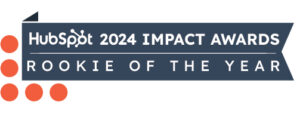In today’s competitive business landscape, success is not only about delivering exceptional products or services, but also about providing a complete and satisfying customer experience. Customer Experience (CX) management has become a fundamental pillar for organizations looking to stand out and retain their customers. In this article, we will explore five essentials for successful CX management and introduce you to some of the top technology platforms recommended by Gartner.
In-depth knowledge of the client:
Understanding your audience is the starting point for effective CX management. Collect data on your customers’ preferences, needs and behaviors. Use analytics tools to gain valuable insights that allow you to personalize interactions and create unique experiences.
2. Customer Journey Design:
Mapping the customer journey throughout their interaction with your company is essential. Identify key touch points and opportunities to improve the experience at each stage. Make sure the transition between different channels is seamless and consistent.
3. Customer service culture:
CX management is not just the responsibility of one department; it must be an integral part of the organizational culture. Train all employees to understand the importance of providing excellent customer service and how their roles contribute to it.
4. Appropriate technology:
Technology tools play a crucial role in CX management. Use customer relationship management (CRM) systems to centralize customer information. In addition, consider using advanced analytics to derive actionable insights from the data collected.
5. Measurement and continuous improvement:
Establish clear metrics to evaluate customer satisfaction, such as Net Promoter Score (NPS) or Customer Satisfaction Score (CSAT). Regularly analyze this data and use the results to make targeted improvements to your CX processes and strategies.
Once you have a clear strategy, it is advisable to adopt a technology platform that supports the process. Here are some of the best positioned platforms in Gartner’s magic quadrant.
Salesforce Service Cloud:
Salesforce is one of the leading customer relationship management (CRM) platforms and its Service Cloud module is focused on delivering an exceptional customer experience. It offers a 360-degree view of the customer, workflow automation, ticket management, knowledge base and advanced analytics for end-to-end customer service management.
Zendesk:
Zendesk is a widely used platform for customer support and customer experience management. It offers solutions such as Zendesk Support (for tickets and knowledge base), Zendesk Chat (for live chat), Zendesk Guide (for creating a knowledge base) and Zendesk Explore (for analytics and reporting).
HubSpot Service Hub:
HubSpot’s platform, specifically its Service Hub module, provides tools to manage tickets, automate workflows, create knowledge bases and collect customer feedback. It integrates seamlessly with HubSpot’s CRM for a complete view of customer interactions.
Freshdesk:
It is a customer support-centric platform that offers efficient ticket management, automation, live chat and a knowledge base. It is especially suitable for teams looking for a complete and easy-to-use solution.
Adobe Experience Cloud:
Adobe Experience Cloud focuses on creating personalized and relevant customer experiences. It offers tools for marketing campaign management, data analytics, content personalization and overall customer experience management.
These digital platforms can help you improve your Customer Experience management, allowing you to interact more efficiently with your customers, offer exceptional support and optimize the overall experience. Remember to evaluate the features and functionality of each platform to determine which one best suits your organization’s specific needs.
It is very important that you get advice from experts such as Focux Digital in order to carry out an adequate implementation based on the understanding of your organization’s strategy and an adequate technological implementation so that you can take advantage of the full potential of the chosen tool.




